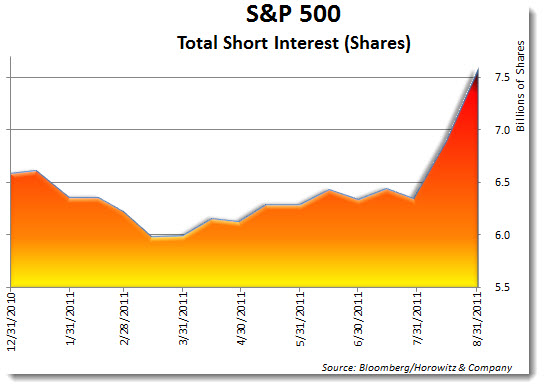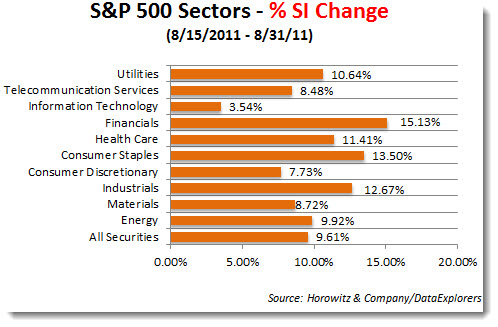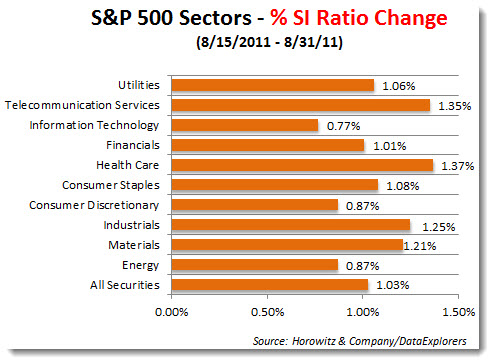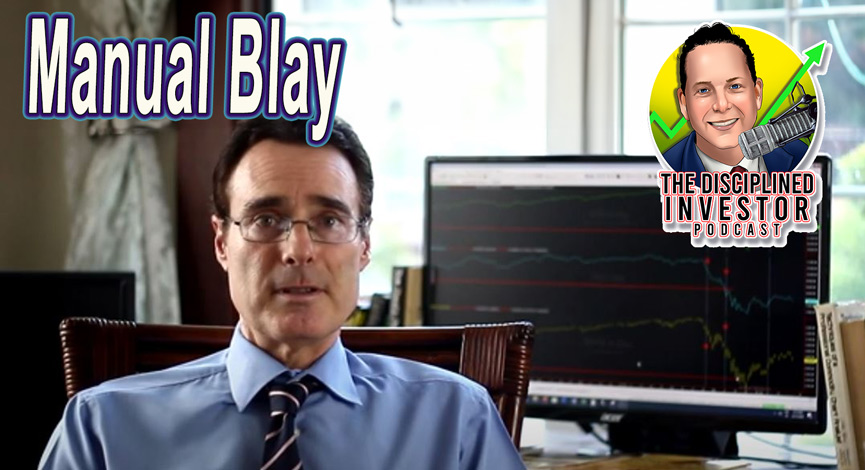During the month of September, we are going to be adding a special section to this site.
The TDI Managed Growth Strategy provides a private “client-only” blog where we discuss the day and our general outlook. Areas that we cover range from current holdings analysis, economic reports, political commentary and more.
The primary purpose of the “client-only” blog is provide information so that clients for whom we manage money will have a better understanding of what is the rationale for portfolio decisions. In addition, the information is designed to be educational so that readers can learn from both our mistakes and successes.
On a daily basis, simply follow www.thedisciplinedinvestor.com or use an RSS reader and point it to : http://tinyurl.com/3u3jahy or http://www.thedisciplinedinvestor.com/blog/category/stocks/insideedition/feed/
 Who says that shorting stocks is bad? While the politicians will have you believe that short-sellers are a menace to society, a parasite feeding on the backs of the common investor, that is simply not true. In fact, it is obvious from any vantage point that almost all rallies from a correction started with a short covering process. If there were no short-sellers during a corrective phase of the market cycle, who would be brave enough to step out and simply buy shares? Short-Selling is simply a way of providing liquidity to the market place. If there were no short-sellers, price discovery and the ability to get in out of certain positions would be quite difficult. However, it is those short-sellers and speculators that provide the liquidity for the stock market to work efficiently.
Who says that shorting stocks is bad? While the politicians will have you believe that short-sellers are a menace to society, a parasite feeding on the backs of the common investor, that is simply not true. In fact, it is obvious from any vantage point that almost all rallies from a correction started with a short covering process. If there were no short-sellers during a corrective phase of the market cycle, who would be brave enough to step out and simply buy shares? Short-Selling is simply a way of providing liquidity to the market place. If there were no short-sellers, price discovery and the ability to get in out of certain positions would be quite difficult. However, it is those short-sellers and speculators that provide the liquidity for the stock market to work efficiently.
It is the short-sellers that look to lock in gains during a consolidation when a news drive event provides for a better potential market outcome. Looking at the recent rise in short interest is one of the reasons why markets have rallied over the past few days even in the face of negative economic reports. As there has been a series of rumors and comments that China or another knight in shining armor will be there to provide the necessary funding for the PIIGS, short positions are being covered out of fear of a a short-squeeze.
Since volume has been steady and there are more shares sold short over the past 2 weeks, the days to cover (Short Interest Ratio) is rising. This means that holders of shares sold short will have a tougher time buying back their shares without moving markets and pushing prices.
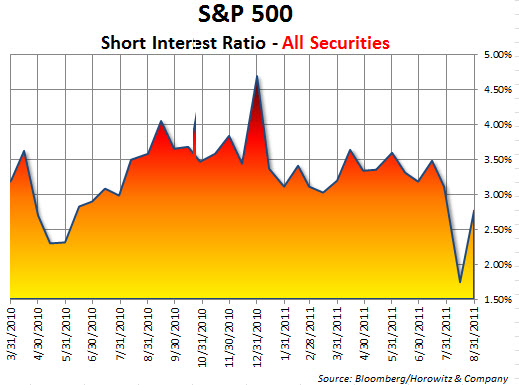 Looking deeper into the data, we see that the largest change in shares sold short are for the Financials.
Looking deeper into the data, we see that the largest change in shares sold short are for the Financials.
The SI Ratio has increased the most for Telecom.
Even with a soft retail sales report, markets managed to break higher ahead of Friday’s quadruple witching. The 1,200 level on the S&P 500 will be a hard fought battle to cross for the bulls as there is a good deal of resistance and options that will expire worthless if under at the close on Friday. An inordinate amount of options are set to expire this month, about double the elevated level of last month’s. This should be providing a good amount of volatility into the end of the week.
After the completion of whatever results on Friday, we are looking at the potential for a forced rally that will be more about window-dressing and bidding up portfolio values into month’s end. If we are on schedule, the probability is that Thursday will have a good amount of economic reports that will have the potential to douse the bulls with freezing cold water.
From there, a rally into month end as mutual funds put cash to work starting somewhere around September 22 is possible. Then, the monthly process starts over again with a sell-off into the first part of October, saved by options expiration and then a rally into the month end.
As I am attending the Bloomberg 50 conference, watch for notes and comments throughout the day on some of the topics that are of interest. Click HERE for the agenda and speaker listing.
A quick note out of Goldman Sachs on Wednesday night:
We are cutting our year-end 2011 price target for the S&P 500 to 1250 from 1400. Our new target reflects a potential return of 5% from the current index level. Our revised price target reflects the heightened uncertainty that characterizes global equity markets today. Our earnings, dividend, and economics forecasts remain unchanged. The unstable macro environment appears likely to persist for the foreseeable future. Downside risk exists to our forecast if the European sovereign debt crisis deteriorates while upside exists if substantial progress is made in addressing the problem
- What has changed: A higher discount rate in our valuation model
Ten-year US Treasury yields have plunged by 100 bp to 2% since late July while the equity risk premium (ERP) increased as the European debt crisis threatened the tenuous US growth outlook. The cost of equity discount rate for our DDM rose by 40 bp to 8.7%. Every 10 bp rise in the cost of equity reduces our S&P 500 DDM-implied fair value estimate by about 30 points. - What has not changed: Earnings, dividends, and economic outlook
We continue to estimate S&P 500 operating EPS will hit a new record high of $96 in 2011 and rise by 6% to $102 in 2012. Goldman Sachs Economics forecasts 2.0% GDP growth in 2012 and only a 1 in 3 chance of a recession. - Our uncertainty-based valuation approach suggests downside risk
Our model incorporates four observable measures of market uncertainty and suggests a year-end 2011 P/E range of 9.2X-11.4X or 1025-1275. The10.3X midpoint implies a year-end index level of 1150, 3% below today
Who says that analysts are often late to the party?
On Wednesday we added position in New Oriental Education & Tech Group (EDU) and KLA-Tencor Corporation (KLAC). Both traded up nicely on higher volume and had just made the technical score that provides an entry initiation signal.
___
Latest Podcast Episode: TDI Podcast: Should I Sell, Buy, Cry? $450,000 PER JOB? How To Hedge (#229)
___


